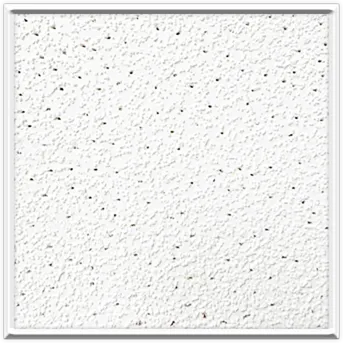8 月 . 19, 2024 12:31 Back to list
Ceiling T Bar Framework for Efficient Space Management and Installation Solutions
The Ceiling T-Bar System An Overview
The Ceiling T-Bar system, often referred to as a suspended or drop ceiling, is a popular architectural feature utilized in commercial and residential environments. This system consists of a grid framework made from lightweight metal strips, known as T-bars, that support acoustic panels, drywall, or other ceiling materials. The design not only offers aesthetic appeal but also practical benefits, contributing to the functionality of a space.
Structure and Design
The T-Bar system is meticulously designed to create a uniform grid pattern on the ceiling. The “T” shape of the bars provides strength while allowing for flexibility in installation. Typically, T-bars are arranged in 2x2 or 2x4 sections, creating a modular system that can accommodate various ceiling tiles and panels. This modularity allows for easy maintenance and replacement of individual tiles without disrupting the entire ceiling.
Advantages of T-Bar Systems
One of the most significant advantages of a Ceiling T-Bar system is the ability to conceal electrical wiring, plumbing, and HVAC systems. The space above the drop ceiling can serve as a functional area for routing these essential services, keeping them out of sight while allowing easy access when maintenance is required. This feature contributes to cleaner aesthetics and better organization within a space.
Acoustic control is another critical benefit of suspended ceilings. Many ceiling tiles are designed to absorb sound, reducing echo and improving the overall acoustics in a room. This is especially beneficial in commercial settings such as offices, schools, and theaters, where noise reduction is essential for comfort and productivity. The T-Bar system can significantly enhance the acoustics of a space, making it more conducive to communication and focus.
ceiling t bar system

Installation and Maintenance
Installing a Ceiling T-Bar system can be relatively straightforward, especially for professionals. The process typically involves measuring the space, installing the main runner bars, and then inserting the cross tees to form the grid. The ceiling tiles are then placed into the grid, completing the installation. This process can often be done quickly, making T-Bar systems a popular choice for renovations and new constructions.
Maintenance is another advantage of this system. If a tile becomes damaged or stained, it can be easily removed and replaced without needing to disturb the surrounding tiles. This flexibility minimizes downtime and disruption in both residential and commercial settings.
Aesthetic Options
The T-Bar system also provides a plethora of aesthetic options. Ceiling tiles come in various materials, colors, and designs, allowing for creativity in interior design. From traditional white tiles to decorative metal and wood finishes, the possibilities are endless. This versatility enables designers and homeowners to create environments that reflect their personal style or brand identity.
Conclusion
In summary, the Ceiling T-Bar system is a remarkably effective solution for modern architectural needs. Its combination of functionality, aesthetic flexibility, and ease of installation makes it an ideal choice for various spaces. Whether you are designing an office, a retail shop, or a home, incorporating a T-Bar ceiling can improve the overall atmosphere while providing practical benefits in terms of sound absorption and maintenance. As the demand for versatile ceiling solutions continues to grow, the T-Bar system will likely remain a staple in both commercial and residential settings for years to come.
-
Revolutionizing Interior Design with Ceilings t grid Suspended SystemNewsOct.29,2024
-
Revolutionizing Ceiling Design with ceiling access panel with Gypsum Tile WaterproofNewsOct.29,2024
-
Revolutionizing Interior Design with PVC Gypsum Ceiling: A Comprehensive GuideNewsOct.29,2024
-
Elevating Interior Design with High quality Mineral Fiber Ceiling TilesNewsOct.29,2024
-
Revolutionizing Interior Design with PVC Gypsum Ceiling: A Comprehensive GuideNewsOct.29,2024
-
Elevating Interior Design with High-Quality Mineral Fiber Ceiling Tiles: A Comprehensive GuideNewsOct.29,2024







